In order to meet our customers' needs, it is essential to develop concrete strategies for each stage of the life cycle. Targeting the customer according to the moment they are at provides better results.

While the first step for any type of customer strategy is to know our customers, we cannot forget the importance of context. The sociodemographic characteristics of our customers are no longer enough to really get to know them, neither for creating personalized strategies nor for customer segmentation. Their interests, concerns and motivations play a crucial role and influence their purchasing decisions.
However, timing is just as important.
You have probably heard the phrase "The right person at the wrong time". Although it is normally used to describe a relationship between a couple, customer-company relationships are no that different.
Offering our customers what they need at that specific time is crucial. To do so, companies must pay attention to the Customer Life Cycle and develop a specific strategy for each stage.
The stages of the customer life cycle are therefore essential criteria when segmenting our customers and creating our Buyer Personas.
What is the Customer Life Cycle?
The customer life cycle includes all the stages that a customer goes through from the moment they first come across our company.
The stages of the customer life cycle are used to segment our customers or potential customers according to the specific needs of each stage. Customer life cycle strategies are essential for lead-to-customer conversion and for specific marketing and sales strategies such as lead nurturing, lead scoring and customer scoring.
Customer lifecycle strategies are specially used in Inbound Marketing and its purpose is to offer the customer what he/she at every moment to strengthen the relationship.
A proper customer lifecycle strategy ensures that in addition to being the right person, it is the right time.
Stages of the customer life cycle
There are different views on how many stages there are in the customer life cycle. However, regardless of which view we choose, in practice the stages are basically the same. In fact, although there are predetermined stages, each company can create its own stages depending on the characteristics and customer journey of their clients.

Source: Hubspot
1. Attraction
The attraction stage is probably the one that requires the most effort on the part of the marketing team, since it involves catching customers' attention.
During this stage, marketing teams will focus on the creation of valuable content adapted to the company's target (content marketing), in addition to carrying out prospecting tasks and starting to build their customer databases or contact lists.
In the attraction phase, lead scoring is very relevant. Lead scoring is used to evaluate and score our potential customers according to the value we predict they will bring to the business. A good lead scoring strategy can help a company improve its customer conversion rate and the creation of acquisition models to activate inactive prospects. In turn, lead scoring is linked to customer lifetime value (LTV).
2. Interaction
The interaction stage involves the first real contact between a potential customer or lead and the company.
Once we have managed to get the attention of a potential customer and have gathered information about who he is and what he needs, it is time to make the first interaction.
The first interaction with a customer can take many possible forms: an email marketing campaign, sending a personalized email, contact via a social media and so on.
What is critical at this stage is that the interactions we make respond to the data we have about the customer. We must strive to offer a personalized customer experience, trying to make the interaction with the company as attractive and pleasant as possible.
If we are just starting to implement a lifecycle strategy and we do not yet know what works and what does not, we can perform A/B tests.
During this stage, analytics are very important to evaluate the results of our actions in order to make informed decisions and improve our content and customer conversion.
3. Delight
The delight or retention stage happens once the lead or potential customer has already become a customer. That is, once the customer has already made a purchase.
Therefore, in this phase, efforts are focused on building customer loyalty and avoiding customer churn.
Customer churn analysis models can help us to find out the reasons why a customer stops buying our product or service or switches to a competitor. These models are very useful for optimizing our customer retention strategies.
The importance of the customer experience
Además de lo ya mencionado, cabe recalcar que la customer experience o experiencia de cliente es uno de los aspectos que más influyen en la decisión de compra de los consumidores. Por tanto, además de curar nuestras interacciones con los clientes y crear contenidos específicos para cada etapa del ciclo de vida, es importante que también procuremos adaptar la customer experience al momento para que, además de la persona y el momento adecuados, el entorno también lo sea.
Want to enhance your customer experience?
Download our e-book on customer experience and consolidate a satisfactory customer experience suitable for each type of consumer.
Conclusion
In an increasingly competitive market, offering customers what they need at all times is of vital importance to improve our conversion rate, avoid customer churn and, ultimately, achieve better results in the medium and long term.
To achieve this, the customer lifecycle strategy is essential.




